Many imagine life on the Oregon Coast as idyllic. Wind-blown Shore Pines, sunny beaches, rugged rocky outcroppings, deep blue waters, and green hills often fill tourism magazines and Instagram pages to attract visitors and brag about where you have been. Shingled buildings line main streets, and on beautiful days, the sidewalks and sandy beaches are filled with pedestrians enjoying a quieter life and fresh air away from the hustle and bustle of nearby metros like Portland and Vancouver. Herds of Roosevelt Elk wander the streets in the winter and are often photographed in the grassy dunes overlooking the beaches.
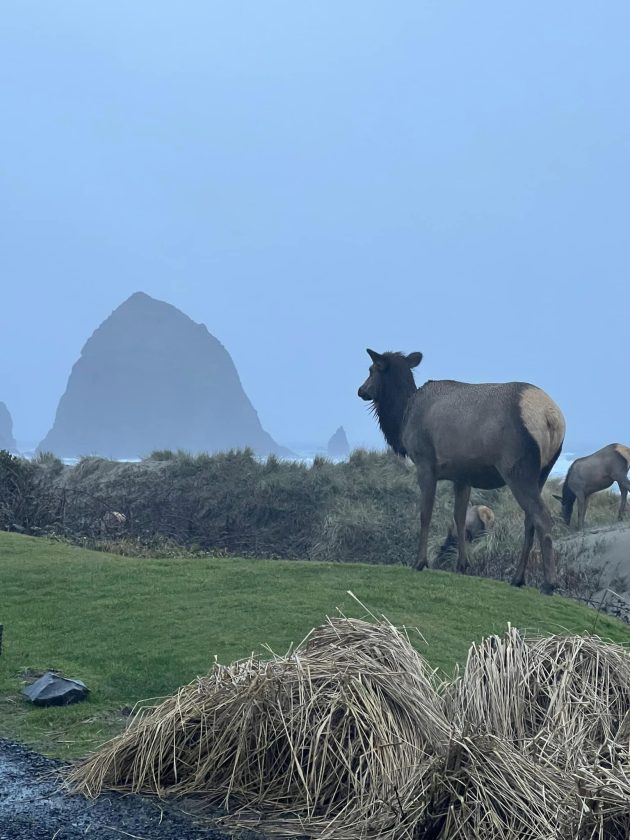
One specific town – er, village, is Cannon Beach. Located directly west of Portland by ninety miles or so, Cannon Beach has attracted the attention of international audiences for over a century. This community has an active art scene, world-renowned restaurants and resorts, and abundant natural beauty. It is an exciting place to call home as we experience an influx of thousands during the summers and nice off-season weekends. Then, it is hushed for the remainder of the year—the average experience in many seasonally-dependent tourist destinations.
The star of the show is undoubtedly Haystack Rock, a majestic monolith that stands at a towering 235 feet. This unique geological formation was shaped by lava flows from the Blue Mountains and Columbia Basin over fifteen million years ago and further sculpted by wind and water erosion. It is a haven for nature enthusiasts, who can explore the intertidal zone during low tides, discovering sea slugs, sea stars, and sticky sea anemones. Haystack Rock has inspired countless artists and made its mark in popular culture, featuring in films like The Goonies and Kindergarten Cop.
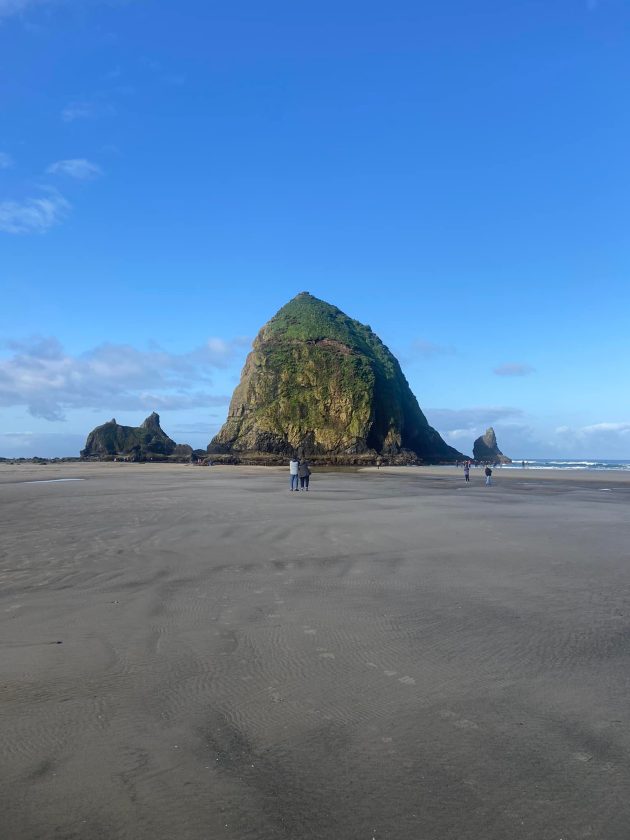
There are other visitors, though, that spend their summers on our coastline that many people come to see – Tufted Puffins. However, unless you know what you are looking for, it is easy to miss them. I regularly answer queries on the various Oregon Facebook pages about whether they are still around or have left already for the season. The puffin colony on Haystack Rock is touted as the most easily viewable on the West Coast. When the tide is low enough, you can stand on the north side of the Rock and watch as Common Murres fill the air and attempt to pick out the few puffins that are mixed in. When that tide is in the morning, my birding buddy/husband and I lead birding trips to Haystack Rock to see this spectacle. This is our third summer offering these free walking trips, and we decided to start them as so many people would fail to see puffins on their visit, which is a shame.
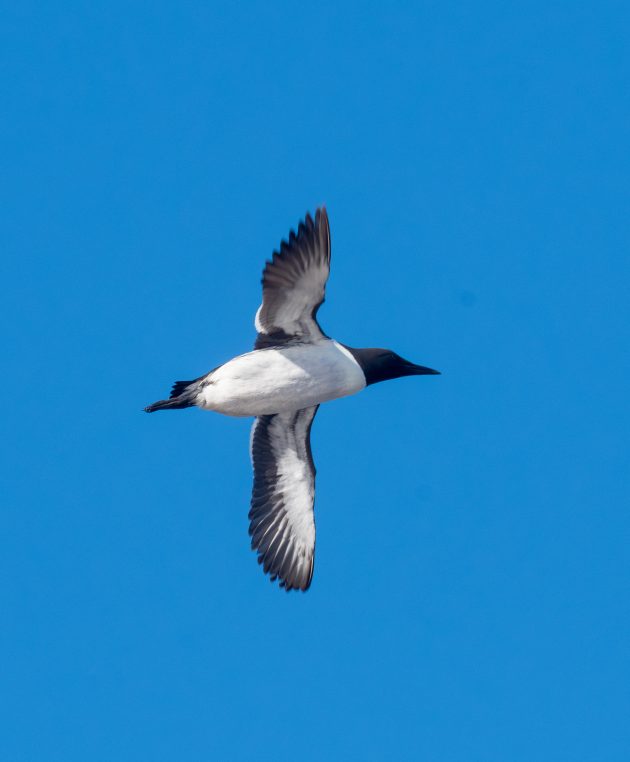
In the 1980s, the number of individuals in this Tufted Puffin colony was just under 1,000, but recently, we have barely reached 100. Much of this concerns the world’s changing climate and fishing pressure off our coast. There just is not the forage fish available that the species needs to thrive and grow its numbers. Tufted Puffins are great ambassadors and poster children for the needs of our oceans, as birders and non-birders are interested in seeing them.
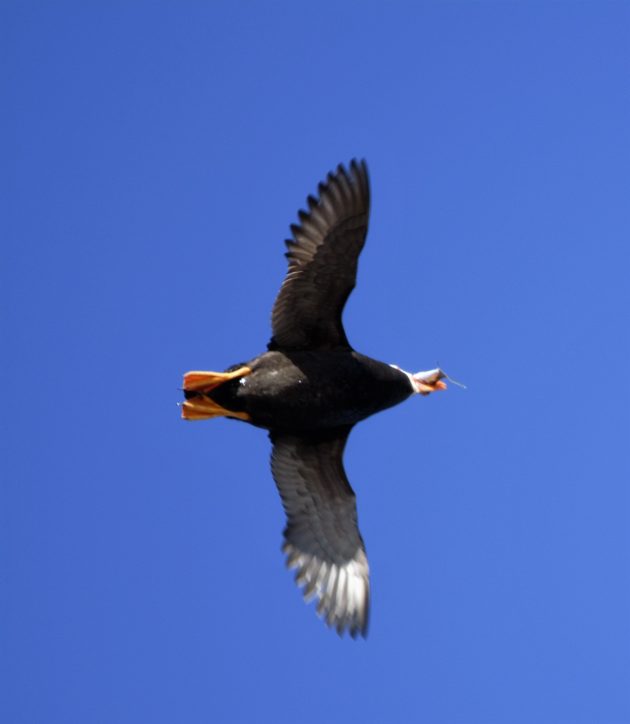
On each walk, we start at a nearby beach access and wander down with whoever shows up towards the Rock. We stand a few hundred feet back to see the top of the Rock adequately; too close, and the sides would obscure our view. The Tufted Puffins burrow into the several-foot-thick substrate layer that has accumulated over the years of deposits from nesting birds. The sides of Haystack Rock are sheer and do not have that build-up, so the puffins are primarily found in the top third, where it starts to slope. We encourage our participants to get a good look at the Common Murres that usually fly just above us on their way out to fish. Next, we check out the puffins that are usually intermixed into the flurry of birds. They are about the same size as the murres but have a solid black body and orange bill compared to the murres black-and-white ensemble. Much of the year, puffins and murres spend their time out in the ocean. They have no use for land other than to breed; this realization fascinates our participants.
If lucky, a few puffins are easily spotted while sunning themselves outside their burrow. Early in the season, we often catch them engaging in courtship and pair bonding behaviors such as allopreening and billing.
Once, an individual was even working on kicking clawfuls of dirt into the air as it cleaned out their burrow before breeding. As the morning goes on, the participants get much better at differentiating between the species, but there are always new folks who join in to see what we are looking at, and we start all over again. Occasionally, a Bald Eagle from a nearby nest will come through looking for a Common Murre to snag, creating a chaotic scene of murres fleeing to the safety of the sea.
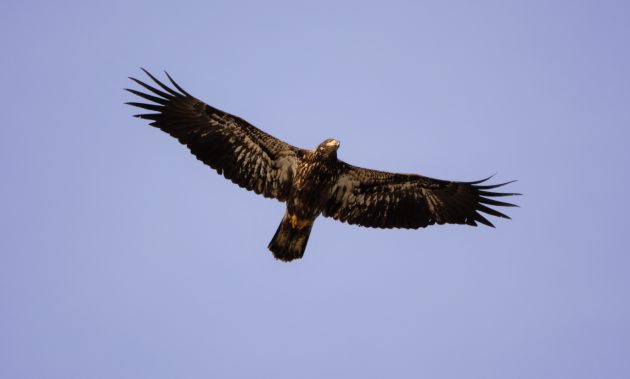
I try to get visitors interested in the Pigeon Guillemots, Black Oystercatchers, and cormorants, but puffins are really what they came to see. Regardless, seeing everyone enjoy this special bird for as long as we have them makes my day.
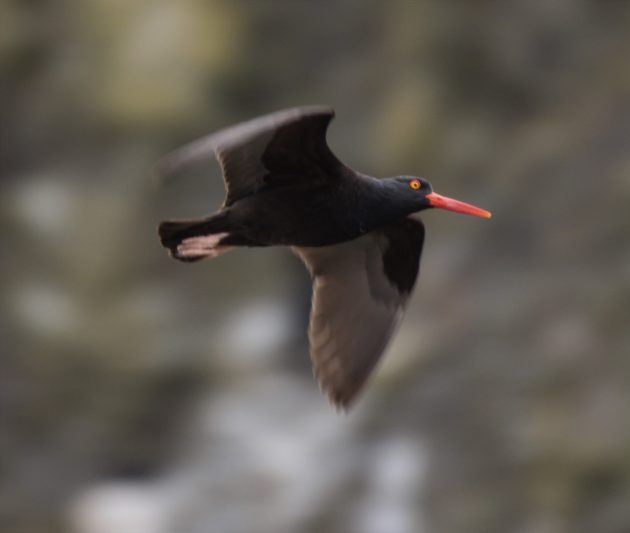
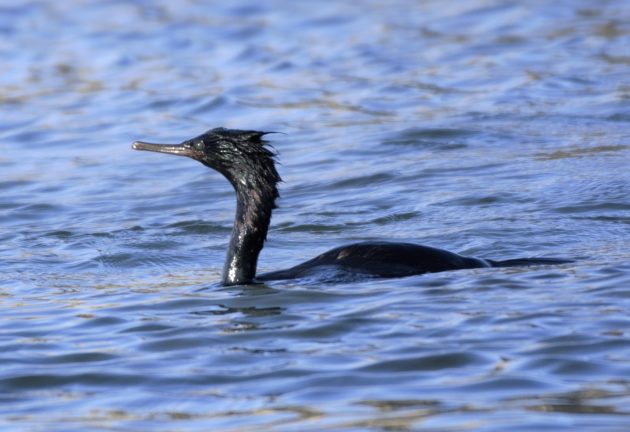
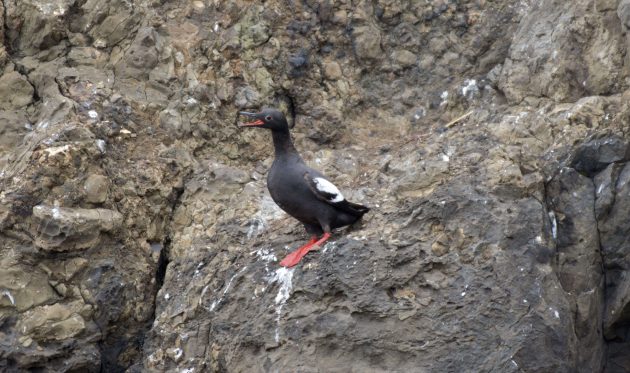
If you are ever in my neck of the woods between April and August, please email me! I would be happy to help you find some puffins.
Source link
Facebook
Pinterest
Twitter
LinkedIn

